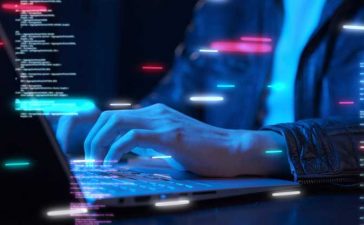Schneider Electric, a Fortune Global 500 company that specializes in digital automation and energy management, has the same challenges other enterprises face today — namely, finding new IT talent or reskilling employees to build talent pools from within.
The company recruits new IT talent from multiple backgrounds, and not specifically computer science graduates. Across the tech industry, more companies are dropping college degree requirements in favor of talent with soft skills, such as the ability to learn, lead, and work as part of a team.
One way Schneider Electric is addressing its staffing challenges is through its AI-based Open Talent Market, which identifies employees as ideal fits for opportunities other than their current role. The program includes training, part-time and full-time positions, and mentorships.
Another method of filling IT gaps is upskilling workers and programs such as Edison, an internal initiative to recognize in-house talent and increase expertise and leadership skills. The program currently has nearly 1,500 Edison employee “experts” and is expected to grow.
 Bobby Cain
Bobby CainSchneider Electric CIO Bobby Cain
In November, Bobby Cain took over as Schneider Electric’s new CIO. Cain was previously the company’s vice president of business transformation and before that a vice president of US national sales.
Cain will be tasked with driving digital transformation initiatives and evolving the company’s IT infrastructure in support Schneider Electric’s North America operations and business growth. His responsibilities include strategic transformation initiatives around supply chain resiliency, simplified finance, and improving the employee experience while working in close partnership with the North America Operations leadership team.
In June, Computerworld spoke with Schneider Electric’s senior vice president of digital rechnology and North America CIO Abha Dogra on retaining talent in a tight IT labor market.
This time, Computerworld asked Cain about his greatest challenges in his new role, his strategy for hybrid and remote work, and what he sees as the most important traits of an IT employee.
What is the most challenging aspect of your job (i.e., what keeps you up at night), and how do you plan to address that? “As remote and hybrid work environments remain heavily prevalent, cybersecurity attacks will continue to be a challenge as it adds security concerns for IT departments. Today’s employee productivity, collaboration, and application tools are heavily cloud-based, which can often lack proper security measures. It will be important for CIOs to ensure their company’s physical workplace, remote devices, and IT networks are equipped with the necessary tools to maintain data integrity.”
What’s been your approach for leveraging technology to boost employee engagement, particularly in a time of hybrid/remote work? “Despite its benefits for increasing employee engagement, at times technology (including the debt that comes with its investment) can be an obstacle itself. Removing burdensome technology and legacy systems allows us to focus more on business agility and the ability to increase collaboration among employees and teams.
“For example, by shifting to a more constructive collaboration platform at the start of the pandemic, we were able to commit to new virtual tools that make a hybrid work environment productive and engage employees more effectively — even when located around the world.
“In addition to investing in new technology platforms, we also created a senior leadership role within our IT organization at the start of this year who is specifically responsible for leading employee experience. At the onset of an employee’s onboarding, the Employee Experience organization helps set employees up for success for their career at Schneider. As part of this focused effort, we have tech partners in 50-plus locations for on-site IT support, meaning help for our teams is never far away.
“By providing this level of advanced support, we’re able to give a human touch to traditional IT needs, which has proven especially beneficial to our new employees.”
What advice would you give to other CIOs? “To put it simply: don’t over index on the digital aspects of your role. Today, it is not enough for a CIO to just be a tech expert. Leadership capabilities and a high degree of business acumen are becoming table stakes. In this role, CIOs should bring broader experience to the table, whether that’s commercial leadership, military experience, like in my case, or time spent in a different domain or career that is adaptable to your current position.”
In what ways is IT important to an organization’s sustainability and what do you believe is the most important effort today? “In recent years, sustainability has become extremely necessary for companies, and digital solutions are at the core of building resiliency and supporting a business’s sustainable transition. At Schneider, we strive to be the digital partner for our customers’ sustainability and efficiency needs. Digital twin technology has been a game changer for supporting the company’s sustainability efforts. The convergence of several new factors makes the digital twin concept a proven enabler for accelerating digital transformation.
“In addition to the products we offer, our services speak to our emphasis on sustainability initiatives within our IT landscape. At our Lexington, KY plant, we took the former outdated legacy infrastructure and completely revamped the operations and facility to align with our climate-aligned goals. From our products to services, it is important for us to practice what we preach to partners and customers and are able to improve the manufacturing process to deliver on sustainability goals.”
What’s the role of CIO in transforming an organization’s digital technology and business landscape? “Today’s technology-driven landscape has completely transformed the roles and responsibilities of CIOs. Technology is driving more aspects of businesses than ever before. As a result, this new landscape has forced CIOs to become essential collaborators for business challenges, problem-solving abilities, and broader innovation goals. However, to be successful, it’s vital to have a team with digital experience to execute digital transformation agendas. Additionally, that team must have credible relationships with their appropriate business partners, so they don’t underestimate the complexity or difficulty associated with change management.”
In your opinion, what is the most important trait of an IT worker, and is that trait innate or developed? “All workers, including IT workers, must have a connection to their company’s mission, and ownership over what their company’s goals and values are. At Schneider Electric, it is important that IT workers understand what we do as a business, in addition to our overarching mission of creating and offering solutions to help our customers. This attitude creates awareness, as well as dedication to their role within IT and the broader company.”
“As for the specific traits of these workers, one that is learned is what we call the power couple model — a domain and digital leader — when the business leaders and technology leaders complement each other by playing different roles in solutioning. The domain, or business leaders, are responsible for the ‘what’ and the ‘why,’ while the digital leaders are responsible for the ‘how’ and the ‘when.’ They do this through leveraging new technology to offer the most efficient solutions to customers and create a beneficial partnership.”
How do you plan to address tech hiring shortages? Are you instituting new programs such as apprenticeships or bootcamps to bring in non-CS graduates?
“The increase of technology within the industry requires a new set of workers equipped with the right set of skills as new technologies come into play. As businesses struggle to fill critical gaps, a top priority for CIOs is attracting the next generation talent, especially as part of the workforce looks at retirement. At Schneider Electric specifically, we have development programs in place for recent graduates to help build a talent pipeline for today and the future. For this program, we recruit from multiple backgrounds and degrees across the board, not specifically [computer science]. Additionally, we are focusing on developing our organization and technical talents in various ways. We are doing this through the Open Talent Market, Digital Upskilling and programs such as Edison.
“Career Acceleration is key across all the Schneider Electric Offices. We are ‘automating’ more of our top performers and potentials to get to the layers just below our digital premium roles so that we have a larger internal talent pool to move into key digital roles as they become available. In doing this, employees are offered more career progression and there’s less pressure and reliance on talent acquisition to find external candidates.”
Copyright © 2023 IDG Communications, Inc.











